
Do you have a question about the Panasonic CS-PE12DKE and is the answer not in the manual?
| Brand | Panasonic |
|---|---|
| Model | CS-PE12DKE |
| Category | Air Conditioner |
| Language | English |
Explains the functions and operation of the remote control for the air conditioner.
Provides detailed dimensions and diagrams for the indoor unit of the air conditioner.
Provides detailed dimensions and diagrams for the outdoor unit of the air conditioner.
Details the functions, display, and operation modes of the air conditioner's remote controller.
Explains the functions, indicators, and operational modes of the indoor unit of the air conditioner.
Describes the anti-freezing control mechanisms during cooling operation to prevent ice formation.
Details protection measures against fogging during cooling operation.
Explains the overload protection mechanisms implemented during cooling operation.
Outlines the thermostat features and temperature control logic for soft dry operation.
Describes the indoor fan speed control strategy during soft dry operation.
Explains how the indoor fan speed is controlled based on indoor piping temperature during heating operation.
Details the auto fan speed settings and logic during heating operation.
Describes the overload protection mechanisms determined by indoor piping temperature during heating operation.
Explains the outdoor air temperature control logic for heating operation.
Explains how the air quality sensor detects and indicates air quality levels.
Describes the procedure for forced resetting of air quality sensor settings.
Explains the conditions under which the timer is reset based on air quality changes.
Details the added operation logic when air quality changes, impacting unit performance.
Guides on how to change the sensitivity settings of the air quality sensor.
Provides critical safety precautions to be followed before and during the installation of the air conditioner.
Offers guidance on selecting the optimal location for installing the indoor and outdoor units.
Specific guidance on selecting the best location for the indoor unit installation.
Step-by-step instructions on how to securely fix the installation plate for the indoor unit.
Guides on drilling wall holes and installing piping sleeves for indoor unit connections.
General instructions for the installation of the indoor unit itself.
Details on connecting the electrical cable to the indoor unit.
Guidance on selecting the best location for the outdoor unit installation.
Instructions for the physical installation of the outdoor unit.
Steps for connecting the refrigerant piping to the outdoor unit.
Procedures for evacuating the air from the indoor unit and piping systems.
Instructions for purging air from the refrigerant piping and indoor unit.
Details on connecting the electrical cable to the outdoor unit.
Guidance on insulating refrigerant piping to prevent condensation and heat loss.
Instructions on managing and disposing of drain water from the outdoor unit.
Procedures for checking the proper functioning of the drainage system.
Methods for evaluating the performance of the air conditioner after installation.
Provides an overview and general information about installing and servicing air conditioners using R410A refrigerant.
Discusses the characteristics, properties, and safety considerations of R410A refrigerant.
Highlights essential safety measures for handling and installing refrigerant piping systems.
Lists the essential tools required for the installation, transferring, and servicing of refrigerant piping.
Specifies the recommended types and specifications for refrigerant piping materials used with R410A.
Details the procedures and precautions for processing and connecting refrigerant piping materials.
Explains the process of inspecting for gas leaks using a vacuum pump after new refrigerant piping installation.
Provides instructions for transferring the air conditioner unit with new refrigerant piping.
Guides on replacing AC units, including considerations for existing refrigerant piping.
Discusses refrigerant compatibility issues when mixing R410A and R22 systems.
Outlines the procedure for recharging refrigerant during servicing operations.
Covers the techniques and precautions for brazing refrigerant piping connections.
Step-by-step guide on how to remove the intake grille from the indoor unit.
Instructions for safely removing the front grille of the indoor unit.
Details the steps for removing the electronic controller assembly from the indoor unit.
Guides on how to remove the discharge grille from the indoor unit.
Explains the process of removing the cross-flow fan from the indoor unit assembly.
Guides on diagnosing refrigeration cycle issues by analyzing pressures and temperatures.
Illustrates the correlation between air conditioner conditions, pressure, and electric current.
Provides methods for diagnosing compressor malfunctions based on symptoms and electric current readings.
Presents operational characteristics charts for cooling and heating modes, showing capacity, current, and pressure.
Instructions on how to interpret and utilize the electronic circuit diagrams for servicing.

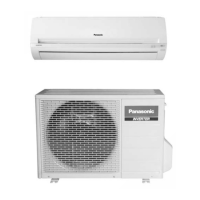
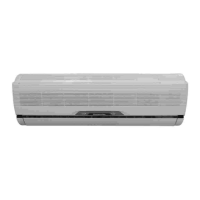
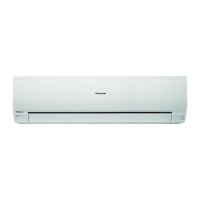
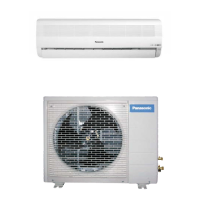
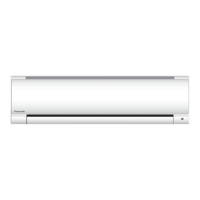

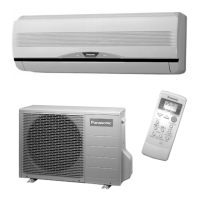

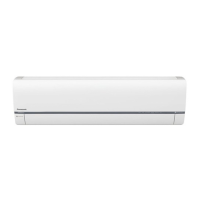

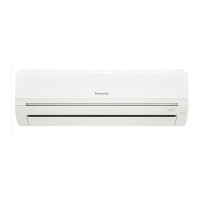
